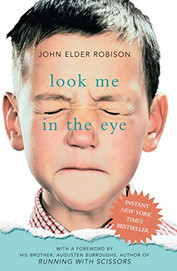
Autism Awareness vs. Autism Acceptance
Since 1972, starting as National Autistic Children's Week, April hosts Autism Acceptance Month. It was first introduced as Autism Awareness Month but within the last 10 years there has been a major push to switch the language from awareness to acceptance. The shift comes because of the idea that awareness is taken with the context of a problem needing to be solved. It highlights an Other and emphasizes differences between people. However, acceptance is an understanding that yes, we are different, but we also share commonalities that should be celebrated. There is strength in diversity and by seeking acceptance we are bridging the gap between communities.
Awareness is easy and simple. By wearing a ribbon or knowing a few facts about autism is all that is really required for awareness. Acceptance is an ongoing constant process. It’s about doing the work to realize the bias that is present and to actively work against it. Understanding goes hand in hand with acceptance as well. It’s moving past the surface impressions and understanding why those with autism do what they do such as stimming or needing a quiet environment. No two people are exactly the same so understanding the individual is an important step in accepting everyone for who they are.

Puzzle Piece and Autism
The puzzle piece has been used as a national symbol for autism for many years. The puzzle piece was introduced in relation to autism by the organization Autism Speaks when it was used for an Autism Awareness campaign. Historically campaigns used for autism awareness have been modeled after campaigns for diseases such as cancer. Due to this, autism was regarded as a disease that needed fixing. These campaigns are harmful and offensive to those who have autism because it stigmatizes them as different and needing to be fixed rather than celebrated for who they are. Because the puzzle piece was associated with this, it represents negativity rather than a positive perspective. An alternative that has been introduced is the use of a rainbow or gold infinity symbol. To give an openness to acceptance and to properly support those with autism make sure to ask what symbol, language, and terminology those in your life and community are comfortable with. Be aware of the history and ableist notions that certain words and symbols can represent.

On a Spectrum
A distinguishing fact about autism is that everyone is different in how they view, and experience autism given the name autism spectrum disorder. Most people assume that when talking about a spectrum it is a sliding scale of severeness. People assume that others are “a little autistic” or are “higher on the spectrum” but it should be seen more in terms of traits that an individual may have that are associated with autism and how that impacts them. This can be depicted using a gradient color scale or wheel. Those with autism may have a certain trait and experience it differently than someone else with the same trait or may not have it at all. This doesn’t make someone “more autistic” than the other and people should not be compared. Everyone is different but are each equally valid in their experiences with autism.
Resources
Since no two people are the same, resources for those with autism should be equally unique for certain needs. For children this can be in the form of having a milestone tracker or watching videos that help to prepare for activities such as going to a hospital or grocery store. For children who have a difference in their communication, the use of visual supports can be quite helpful. A few resources that adults with autism can utilize are services that make sure a person is eating/drinking enough as well as day programs. Organizations and agencies can offer a multitude of services that help from everyday tasks to milestone goals.
Below we have provided a list of national and local resources links for those with autism. They include resources for topics such as support, housing, health and more!
Click the links to visit the pages:
Book Recommendations
More reading recommendations featuring books with kids on the autism spectrum in this blog post.
References
Carmen B. Pingree Autism Center for Learning (n.d). Retrieved April 20, 2023, from https://carmenbpingree.com/blog/what-is-autism-spectrum-disorder/
“Why the Autism Wheel Is Replacing the Spectrum - Ablelight Blog.” AbleLight, 2 May 2022, https://ablelight.org/blog/why-the-autism-wheel-is-replacing-the-spectrum/.
"Why the Puzzle Piece Isn't Used in Autism Acceptance."Rock Paper Scissors, Rock Paper Scissors Branding & Marketing. https://www.123shoot.com/nothing-missing-why-the-puzzle-piece-isnt-used-in-autism-acceptance/. Accessed 20 April, 2023.
-This post is by Bri, SIUE MSW Library Social Worker
Autism & Caseyville Library
Sensory Saturdays
Don't forget to catch Sensory Saturdays at Caseyville Library every 2nd Saturday of the month!
Sensory Saturday is a pleasant sensory experience at Caseyville Library aimed for neurodiverse individuals and families of all ages.
Each 2nd Saturday the library will featured dimmed lighting, lower volume, sensory activities, themed story times, arts & crafts.
Sensory aid backpacks equipped with tools and aids like sunglasses, headphones, stimming tools, and visual communication supports are also available for in-library use and checkout.
Esther the Comfort Dog will also be available to be read to. Reading to pets boosts reading confidence and curbs reading anxiety.
We hope to see you there!












Comments